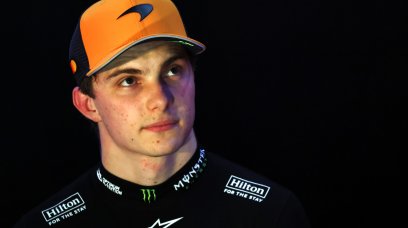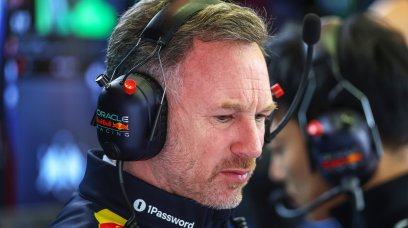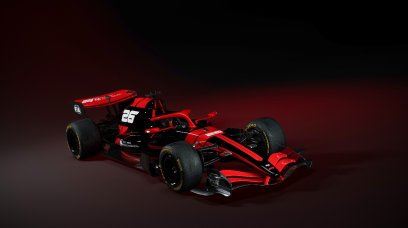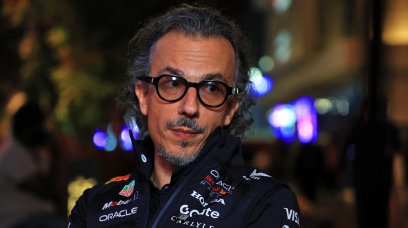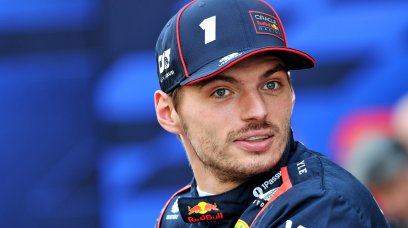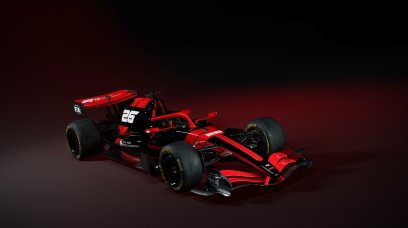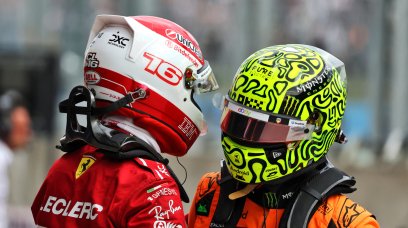The Japanese Grand Prix at Suzuka took on a particular technical importance for two teams: Red Bull and McLaren. For Red Bull, the weekend would clarify whether the Singapore difficulties were an isolated case and unique to Marina Bay or whether TD018 and the strengthened TD039 had truly upset the balance of the RB19. Simulations had shown Red Bull as the favourite for Japan, with Max Verstappen duly going over a second clear in the first practice session on his first lap. As for McLaren, Suzuka would provide answers about the competitiveness of the MCL60 after its Singapore upgrades that had allowed Lando Norris to claim an excellent second place. Only Norris had access to the latest aerodynamic development package in Singapore, with Oscar Piastri getting the upgrades for Suzuka meaning both drivers were given the same equipment. The upgrades consisted of a modified floor edge, characterised by a long slit in front of the rear wheels, re-designed air inlets that were reduced in width and better sculpting of the front of the sidepods. The engine cover was also upgraded, as was the front-wing endplates and brake air intakes for McLaren's second huge package of the season, with the intention of creating less interference with the side-wall of the diffuser. The rear-wing endplates were also connected, characterised by miniaturisation of the element in favour of aerodynamic efficiency. This was a substantial effort on part of the engineers of the Woking-based team, both in terms of design and production of each part at this late stage of the 2023 championship, with attention and energy being shifted towards the design of the '24 car by most design offices.
For McLaren, this was not a waste of energy, with some strong results picked up in Singapore and Japan - but served as an opportunity to get a head-start with the design of the 2024 car, which these upgrades outline owing to the stable set of regulations across the winter. Judging by earlier performances of the car at Silverstone, it was plausible to assume that it would run well at the similarly high-speed Suzuka, with the Esses resembling the fast changes of direction found through Maggots, Becketts and Chapel at the Northamptonshire circuit. Nevertheless, under the leadership of Andrea Stella, McLaren has followed a clear, well-defined path in identifying the car's problems, and having a systematic plan of intervention to rectify the problems - usually found in low-speed corners. Not only does McLaren now have the necessary tools, including the new wind-tunnel, it has now acquired an extremely analytical working methodology since the beginning of the year. It is certainly not to say that all the weak points on the MCL60 have been resolved with the development package to make it a potent threat on every type of track, but it is correct to consider the car an extremely solid base from which the team will be working from to create the car for 2024.
Revised sidepod inlet and engine cover
The revision to the sidepod inlets (below, Image 1), features revisions to the width of the inlets, with better profiling of the leading edge. McLaren is aiming to manage and control the air to the rear of the car and diffuser with the goal of tidying up the flow downstream. As for the engine cover (below, Image 2), this has been totally reprofiled as to sport a slimmer top section and revised tail wing. Article continues below.
New floor and rear-wings
The edges of the floor now sport a full-length horizontal slit (below, Image 1)to better manage the airflow underneath the car, with this area of particular importance throughout the ground-effects era. What is also noticeable is that the team has built more rigidity into the floor by doing away with the 'stays'. At Zandvoort, these were present in front of the rear-wheels to add extra stability. With the Singapore upgrade, these have disappeared (below, Image 2) in favour of better aerodynamic cleanliness. As for the rear-wing endplates, a design featuring a minimal link between the flap and endplate was given to Norris's car. In Singapore and Suzuka, this upgrade was also on Piastri's car as part of the complete package (below, Image 3).
Most read
